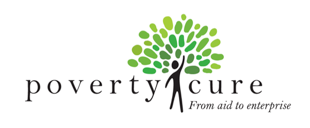Sustainable Microfinance
Since that time, successful microfinance institutions (MFIs) have been established on every continent. As with any tool for helping the poor, the tool of microfinance must be used carefully. Microcredit can be a blessing when lenders make informed loans to promising microenterprise ventures while taking care to build in accountability. Hopeline Institute of Ghana, for instance, trains its borrowers in basic bookkeeping practices and insists that they keep accounts of how the loan is spent in the business. Accountability also means insisting on some form of collateral from the borrower, even if primarily a non-traditional form of a capital, such as the social capital inherent when several women who are neighbors and friends borrow under an arrangement of mutual accountability and responsibility, an arrangement entered into voluntarily.
Another characteristic of the best microcredit operations is transparency in the lending operation itself. In other words, accountability shouldn’t just be for the borrowers. And indeed, a lack of accounting transparency has been a major criticism of microcredit.
When lending becomes tied to a secular humanist vision of the family and zero-sum thinking, or becomes a vehicle for propagating versions of collectivism, or becomes a front for exploitative lending practices, it begins to undermine rather than promote human flourishing.
Microcredit as a Subset of Microfinance
Microfinance is not synonymous with microcredit; rather, microcredit is one aspect of microfinance. Unfortunately, these two are often viewed as one and the same, with the sole focus being on the impact of loans. When performed ethically and at reasonable interest rates, small loans to enterprising individuals have proven a powerful resource even in the poorest areas of the developing world. However, sustainable progress demands a holistic fiscal approach focused also on the other, perhaps less flashy financial services, such as savings programs for the poor, which are all too often forgotten amidst the hype surrounding credit.
Microfinance: State of the Research
Academic studies of microfinance have returned widely conflicting data. In a 2008 review essay in the Electronic Journal of Sociology, John Westover commented that “despite the popularization of microfinance in the mass media and the many positive findings that are reported in some feasibility and impact studies, there are also many studies that report some negative impacts of such programs and fail to find a direct link between microfinance program involvement and poverty reduction.” He also concluded that while there were several worthwhile case studies, there remained a shortage of extensive, rigorous quantitative studies of microfinance. “Until more such studies are conducted and findings reported,” he concluded, “we must take the findings of less rigorous impact studies with a grain of salt and not be too quick to generalize findings of the impact and effectiveness of a specific program, in specific location, at a specific time, to other cases.”
Microenterprise vs. Small and Medium Enterprises
While microfinance can play a role in development, it is not a panacea for poverty. If microcredit is not carefully targeted toward wealth-creating enterprises, it can create a dependence on borrowing. Microfinance may also have the effect of distracting attention away from a crucial link in the chain of development—small and medium enterprises. Businesses of 10 to 500 people often lack the up-from-poverty appeal of microenterprise stories. Yet, as Andreas Widmer points out, in developed areas such as “America and Europe, it is SME companies that employ 75% percent of the entire workforce and account for 50% of GDP
Microenterprise jobs have provided hope and opportunity for many people, but as Arneel Karnani points out in the Summer 2007 issue of the Stanford Social Innovation Review, microfinance places the emphasis on small subsistence activities which are generally less effective at creating new wealth for the poor than are businesses of thirty or more employees. Jobs in larger companies and factories also are typically more stable and lucrative than microenterprise businesses.
The Common Threads: Enterprise and Wealth Creation
This isn’t an either/or dilemma. Microenterprise as well as small, medium and large businesses can and should play a role in a healthy, growing national economy. The common thread is wealth creation. Credit and other financial services directed toward enterprises that create new value are a powerful tool for promoting sustainable growth, and for these to flourish the focus needs to be placed on institutional reform and the creation of a just investment climate marked by secure property rights and the rule of law. For widespread and sustainable eradication of poverty, such an attractive saving and investment climate is foundational.


